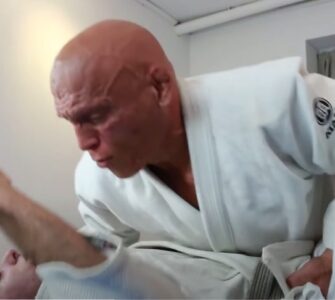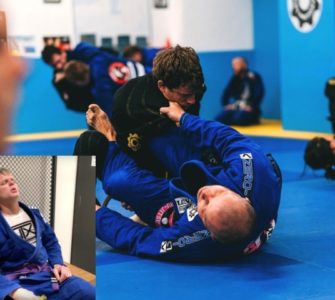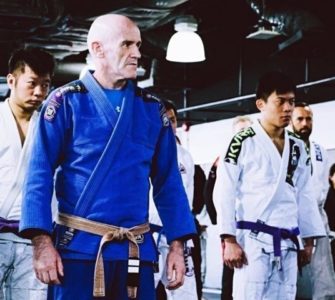Source: Livestrong & http://enoisblog.wordpress.com
With summer just starting, swimming is a great option for BJJ cross training, these 2 articles have covered the benefits of swimming for a BJJ athlete. I was swimming about 1 hour per day after work, last summer and immediately started feeling a change in my cardio and breathing:
“Swimming is great for jiu-jitsu. In my opinion it’s far superior to running as a form of conditioning because there is no impact on the ankles, knees and hips. It lengthens and strengthens the muscles and opens up the back and shoulders – areas of the body which often tighten up after a lot of grappling.
It’s also excellent for breath control and strengthens the heart and lungs. It promotes rhythm and, when done at a slow pace ,will help with over-training and recovery.
If you train in jiujitsu a couple of times a week as a hobby, you may have little need for cross-training to improve your martial arts skills. But competitive jiujitsu fighters need to maintain an optimum level of fitness. Swimming can be a beneficial choice in physically preparing for a jiujitsu match.
Strength
Although jiujitsu allows a smaller and weaker opponent to use another fighter’s strength against him, strong jiujitsu practitioners have an advantage over weaker foes. When you’re swimming, the water resists your motions. This forces your muscles to work harder, the basic mechanic behind building strength. It won’t be as effective as working out with weights, but it will make you physically stronger.
Cardiovascular Conditioning
Swimming elevates your heart rate, the core aspect of cardiovascular conditioning. Any workout that does so, if performed regularly and with intensity, will improve your cardiovascular capacity and endurance. Jiujitsu is a physically demanding sport, and the better your cardio condition, the more success you will have in the latter stages of a match.
Breath Control
Controlling your breathing helps you relax, move quickly, analyze situations intelligently and maintain your wind under exertion. Because swimming only allows you to breathe at specific intervals, the act of swimming helps you practice breath control. This rhythmic practice and experience translates directly to breath control during jiujitsu practice and competition.
Weak Points
Although swimming develops many attributes important to jiujitsu, it does not do much to improve your grip, balance, flexibility or ankle strength. All three are also important to jiujitsu. Even if you swim to supplement jiujitsu workouts, you need to find other exercises to balance your fitness training.
Each of the conventional strokes can help your jiu-jitsu game:
The Strokes
I believe each of the main strokes in swimming have certain qualities conducive to jiu-jitsu. The great part is certain strokes and drills will be especially helpful to you according to your jiu-jitsu game and body type. This is the kind of versatility that I am talking about when it comes to being able to use swimming in many different ways for strength and conditioning.
“The Crawl” or Freestyle
Many competitive swimmers consider the crawl the staple stroke of swimming. Ask any competitive swimmer and he or she will tell you about the massive distances they have racked up swimming this stroke. Freestyle is a great stroke to work on for jiu-jitsu players, especially those who like to pass the guard. Let’s breakdown the movements of this stroke and see how it can aid your guard passing movements.
The Upper Body: A freestyle swimmer strokes on his belly and the stroke works his entire upper body, utilizing his back, shoulders, chest, and triceps. The swimmer is constantly pulling water while rolling his shoulders to create a good angle to glide through the water. This same concept is applicable to passing a guard: pulling an opponent into you while you roll your body’s angles to find openings to pass his legs and isolate his hips.
The Lower Body: A freestyle swimmer pivots his hips in accordance to the way you rolls shoulders while stroking. He or she flutter kicks constantly for extra propulsion through the water. The most beneficial aspect to jiu jitsu here is the constant exercise a swimmer gets shifting his hips over and over. The kind of hip mobility that can be acquired from this stroke is very helpful in a jiu jitsu player’s ability to shift the pressure in his hips while passing the guard.
Backstroke
The backstroke is an excellent stroke for guard players, especially versus an opponent who likes to keep his head glued to your torso while passing. A backstroker continually rotates his hips and rolls his shoulders, taking his thumb out of the water first and entering with his pinky. Mimic this movement with a push to the face on the mat, and you create a zig-zag style hip escape that keeps your opponent always at your center line.
Breaststroke
The breaststroke will help out your jiu jitsu in quite a few ways: Practicing the froggy style kick a lot helps to build up the muscles in your inner thighs and hip flexors. Having these muscles especially helps your “squeeze” when playing closed guard, shooting triangles chokes, or even getting good hooks in for a butterfly guard.
Swim breaststroke competitively, and you will see that timing is a crucial factor. It requires a kind of rhythm with that syncs with your breathing. Master this synchronization, apply it to jiu-jitsu, and see how your endurance will spike.
Butterfly
The most powerful, impressive, and physically exhausting of the conventional swim strokes. Butterfly is a good stroke for jiu-jitsu because it is so physically demanding. It requires some explosiveness, correct body mechanics, and a good deal of core strength. Ask the swollen meathead from the gym to try a couple laps of this stroke, and he’ll probably cry after two.
The butterfly stroke works nearly all of the body, building enormous shoulders and lat muscles. It also helps build explosiveness, endurance, and lung capacity in any athlete, no exception for Brazilian Jiu-Jitsu players. While very physically demanding, it is important to remember the butterfly stroke takes a great deal of finesse and attention to technique. You should take your time and ease into this stroke if you are relatively new to swimming.
Upper Body Strength Workout:
10 x 100yd crawl with paddles and pullbuoy
10 x 100 yd backstroke with paddles and pullbuoy
The paddles and pull buoy disable a swimmer’s kicks and force him to pull more water with each stroke, training the strength of his or her lats, chest, deltoids, and triceps.”


















